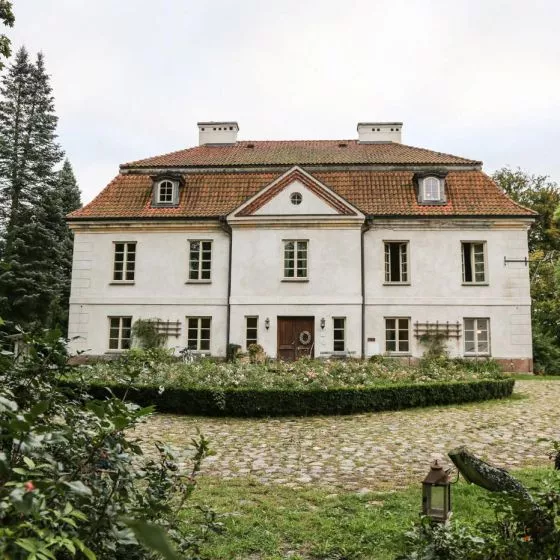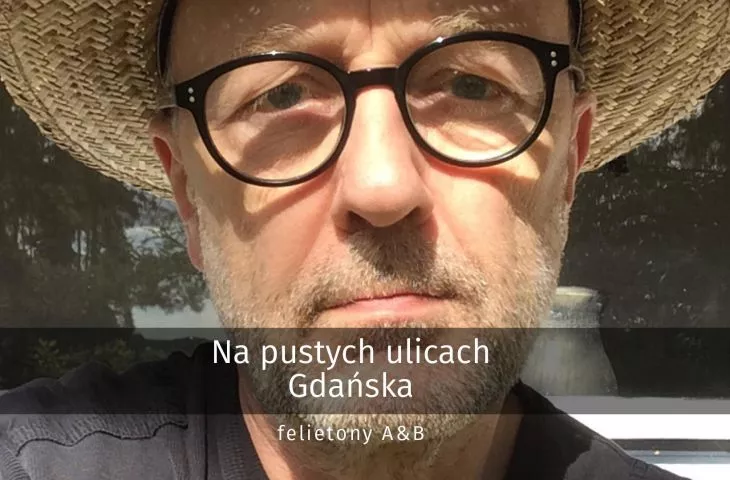A city in a time of pestilence
[ A&B 05'2020 original material]
Leaving aside hours of television coverage of super-important historical events, twice in my life I have seen cities whose streets were empty. In the 1990s, I drove my car through Detroit's deserted downtown. Today I walk through the deserted streets of Gdansk.
Detroit was surreal. Looking through the car window at the American far-flung perspective of the six-lane roadway, I could not see any moving car in front of me. The only movement I noticed was the Detroit People Mover light rail car. It was passing slowly, high above the roadway, on a concrete rail stretched between high-rise buildings. From a distance, in its sky-lit windows, I caught a glimpse of the silhouette of a single passenger, as if hunched over thoughtfully. The empty street with no other cars allowed one to look around a bit, to gaze at the buildings and stores. The sun was shining into my car window, so it took only a moment for my eyes to recognize that almost all of the storefronts were covered - some with fiberboard, already soaked and corrugated, others with carefully trimmed plywood printed with business names and postal symbols, and some brutally boarded up with boards on which someone, presumably the owner, had written in large letters in red spray: CLOSED, and sprayed a dot behind the word. In this city, a few years later, on the annual Halloween, the residents who remained in Detroit had to organize fire patrols, because it had become a tradition to set fire to massively abandoned houses.
The main city of Danzig today is as if from a dream. Tenements matted with the power of new paint tempt with gleaming storefronts. Behind their glass windows, neatly arranged tables on which nothing stands, next to chairs on which no one sits. Next to the restaurant, on the steps of the only store on the street, a saleswoman leans her back against the frame of the open door, intertwines the fingers of her hands on her stomach, lifts her face slightly to the sun. She could hear the buzzing of a bee searching for flowers in a pot set up near the entrance. Higher up above the store and above the restaurant, the dark, motionless windows of the apartments that tourists have not rented, that students have left. However, a few of them still glow brightly with curtains washed for the holidays. These windows belong to the old residents, who still bring a little movement to the facades of the tenements: every now and then, with a precise, repetitive gesture, they push back the curtain, open wide one window sash, rest their elbows on the sill and rub the circle of the lighter in their hands near their faces a few times, then, taking in air, they lean out a little. They let the first blue cloud out of their mouths when one of their hands is already resting comfortably at their elbow, and the other, the one with the cigarette between their fingers, leans away from their faces to keep the smoke from entering the apartment. As they smoke, they look at the pigeons walking along the paved roadway, hopping onto the curb of the sidewalk. They look as if they are confused. Perhaps they are cooing constantly "where have they all gone? Where are they?"
Detroit deserted as a result of the complete collapse of the local industrial monoculture, lost out in the global race of technology in automobile design and production, fell into a complete collapse of the city's labor market and local economy, and as a consequence the social ties that construct the culture of urban habitation collapsed. Gdansk has been deserted by surprise by an invisible virus that has taken over the entire world like an element with the help of mobility technology. In this standstill of life, the city waits anxiously to see what will happen to its labor market, how the local economy will cope, how Gdansk's culture of communal and hospitable habitation will cope with the new situation. In both of these situations, twenty-five years apart, the solutions depended and continue to depend on wise decisions by local governments, state governments, global institutions - in a word: wise policies. Detroit, after its crisis, has still not found solutions to return the city to its glory days. What will it be like for the cities of the world after the pandemic? How will it be with Gdansk? We must realize that if the classical theory of the city has for years assumed that urban health depends on economic, social and political issues, the contemporary situation has already certainly demolished the first two of them and exposed them to the dangerous care of a strange new politics.
Recently, we have been working on how to add issues of ecology and architecture to the issues of economics, social welds and politics in a serious way. It seemed that we were slowly developing new strategies for city architecture, that the next phase of civilization architecture must give not only functionality, but also sustainability and a wise culture of the urban environment. Closed-circuit technologies for air in buildings were created to avoid wasting energy. Advanced public transportation systems were created to reduce the number of individual cars in the city. City architecture divested itself of plastic to save the oceans. Today, global blight is trying to reverse this course of change. Already we want to open windows rather than blowing recuperated air. Already we don't want to mingle with the crowd on public transportation. Already we expect everything in public spaces to be disposable plastic again.
But beyond the belief that green trends will return, there is also good news today. Cycling hasn't lost anything to the pandemic! Only that it is worth switching to bicycles no longer only from individual cars, but also from public transportation. Perverse. But I read online that Italian and American cities have already started widening bicycle paths.














